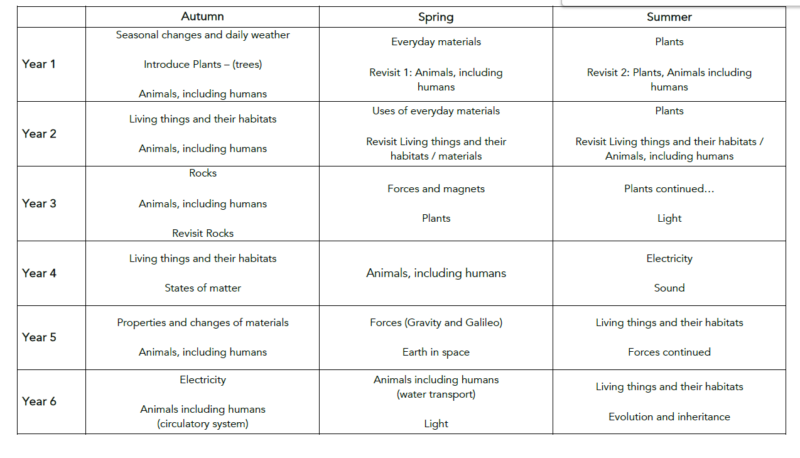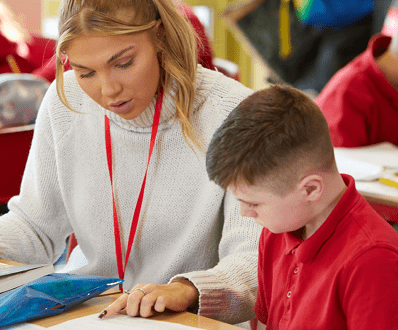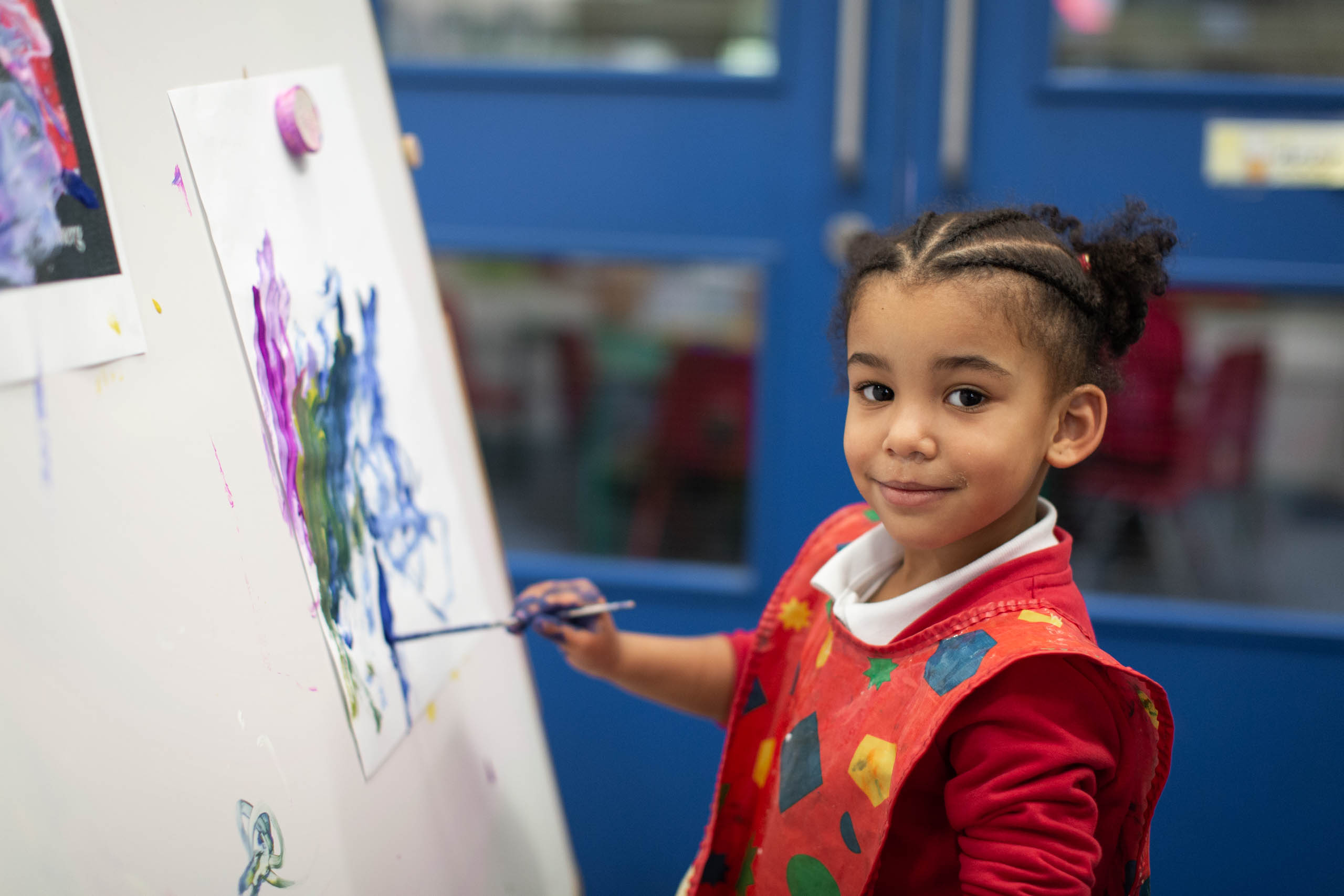

Curriculum
At Ambleside Academy, we adopt a clear and consistent approach to teaching to ensure that within each lesson pupils learn well. Across the school, we teach the foundation subjects using the CUSP curriculum, which pays close attention to the National Curriculum sequence and content. CUSP is guided by evidence-led curriculum structures, such as retrieval, spaced retrieval practice and interleaving. It is underpinned by explicit vocabulary instruction and research-focused pedagogy. Evidence leads to exceptional outcomes for pupils, as a result of coherent curriculum design and instructional teaching.
Please click here to access our feedback statement of learning underpinning the curriculum.
Our Strive for Five Reading Programme
Reading lies at the heart of everything we do and underpins the broad, balanced curriculum we offer to Ambleside Academy pupils. Raising pupils’ attainment in reading is a priority for every member of the school staff, as is developing a love
of reading. Our staff and pupils alike know that diverse and enjoyable reading opportunities allow our pupils to develop into understanding, tolerant and kind young people. A wider reading community, and close home-school relationships, are of the utmost importance to us. We understand the key connections between successful, passionate readers and wider life
opportunities, including the positive impacts on mental health that a love of reading can offer. In the knowledge that excellence and enjoyment are reciprocal processes, we strive to enhance and support children’s reading at every possible opportunity – so Ambleside pupils love to read, because they can read.
We understand that for correct Literacy Instruction, our children must be taught the five foundations of reading – which include Phonemic Awareness, Phonics, Fluency, Vocabulary and Comprehension. These Five Pillars of Reading are tightly woven throughout our reading programme, Strive for Five!, to ensure our children have the skills, knowledge and expertise to not only be successful readers, but to develop a love of reading as well.
Click here to view our Reading Statement of learning.
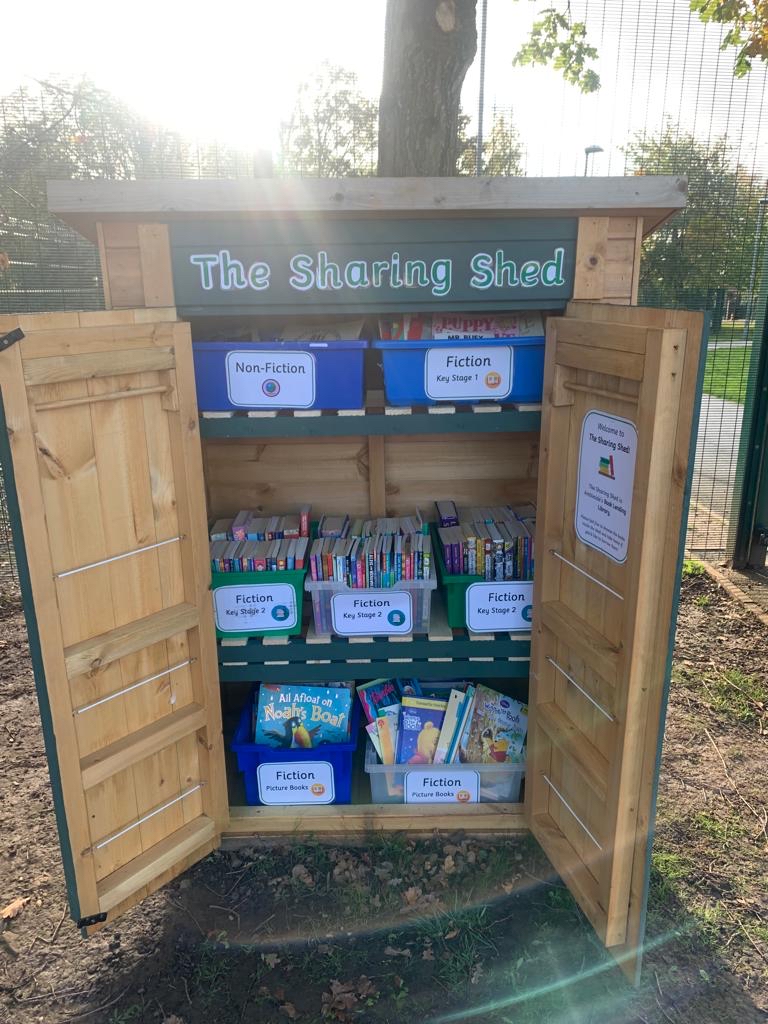

For more information on our reading expectations for each year group, click on the links below.
Year One
Year One Age Related Expectations Statement Reading
Year Two
Year Two Age Related Expectations Statement Reading
Year Three
Year Three Age Related Expectations Statement Reading
Year Four
Year Four Age Related Expectations Statement Reading
Year Five
Year Five Age Related Expectations Statement Reading
Year Six
Year Six Age Related Expectations Statement Reading
Reading Characters Skills
For correct literacy instruction, our children must be taught the basic foundations of reading, which include Phonemic Awareness, Phonics, Fluency, Vocabulary and Comprehension.
Within our phonics policy, aspects of the five pillars of reading are outlined, with a specific focus in particular on Phonemic Awareness, Phonics and Comprehension
The Phenomenal Phonics Programme follows a synthetic, systematic approach to the teaching of early reading: explicitly teaching the correspondence between letters and sounds to blend for reading (decoding) and to segment for spelling (encoding).
Phenomenal Phonics follows a progression of phases, with our well evidenced, bespoke approach driven by high quality assessment half termly. Assessment informs next steps in learning to ensure that all pupils demonstrate good progress in the number of sounds that they know as well as the words which they can read and spell.
Click here to view our Phenomenal Phonics Programme.
At Ambleside Academy, our ‘Authors in Training’ Programme supports all pupils to enjoy and succeed in writing effective texts for a range of purposes. We understand that successful writing is built upon a strong foundation of Transcription, combined with skills of Composition. The seven phases of the ‘Authors in Training’ Programme guide pupils through the course of a Writing unit, to be able to: perform a range of texts using the spoken word, analyse models for features specific to the genre, understand the effect and purpose of vocabulary, plan and structure coherent narratives, apply grammatical concepts correctly and effectively review their work and the work of others. Where pupils are not working at age-related standards, gaps in learning are quickly identified and Transcription skills are prioritised through an adapted
curriculum, to ensure pupils make accelerated progress. We believe that with these range of skills, all pupils at Ambleside Academy become successful authors, who are motivated to write and take pride in creating effective pieces of work that
show awareness of the reader.
For more information about Authors in Training, click here
To access our writing age related expectation grid, including glossary of terms please click below:
The Seven Phases of an ‘Ambleside Authors in Training’ Unit
Our programme provides a coherent and clearly sequenced planning formula which is quick and simple to create and can be applied to any unit or genre of writing in any year group. Across a Unit of Work, children are expected to be engaged in the following seven phases of learning so that they make progress:
• Connect
• Explicit Vocabulary Instruction
• Rehearse and Immerse
• Deconstruct
• Attempt
• Refine
• Challenge
We believe that all these phases are essential for children to be explicitly taught the skills required to be successful writers. It is our aim that by the end of a Writing unit, all children will be able to write a coherent piece of writing at length which
has a clear audience and purpose in mind. We teach our children the necessary skills of Transcription (Spelling and Handwriting) and Composition (Articulation of Ambleside Authors in Training Programme and Statement Outline Ideas and Structure in Speech and Writing), as well as the skills of Planning, Editing and Reviewing. Oracy underpins the high standards that we have in our teaching of Writing. We ensure that our children are exposed to a wide and ambitious diet of vocabulary that they are expected to know, use and explore in both the spoken and written forms. We explicitly teach vocabulary through direct instruction and understand the importance of daily opportunities to develop pupils’ personal lexicons.
We have high standards in pupils handwriting. We explicitly teach the children legibly and fluently. Please click here to find our statement of learning for handwriting at Ambleside Academy.
At Ambleside Academy, we follow an inclusive approach known as Ambleside’s Masters of Mathematics. This is a blended approach incorporating Maths Mastery which is underpinned by White Rose. Our approach incorporates clear expectations for the Quality of Education in mathematics. This promotes our pupils being taught in small steps to give them the best possible chance of mastering mathematics whilst building self-confidence and resilience. We believe that the Ambleside’s Masters of Mathematics approach will equip our pupils with the skills they require to confidently use mathematics as part of their everyday life.
At Ambleside Academy our mathematics Long Term Overviews mirrors White Rose’s Long Term Schemes of Work along with the Calculation Policy. It ensures consistency throughout our pupils’ learning journeys from early years straight through to end of key stage two. This approach promotes pupil success by developing connected pieces of knowledge as it builds on prior learning each year, deepening their understanding of mathematics.
Pupils are to be taught in small steps as this has proven to develop their mathematical competence by supporting their understanding and allowing opportunities for pupils to practice. This in turn, increases their confidence and allows opportunity for pupils to master mathematics by keeping up rather than catching up.
Please click here for the statement of learning for Mathematics.
Art at Ambleside Academy is delivered through the CUSP curriculum.
The CUSP Art curriculum is organised into blocks, with each block covering a particular set of artistic disciplines, including:
- drawing
- painting,
- printmaking
- textiles
- 3D
- collage
Vertical progression in each discipline has been deliberately woven into the fabric of the curriculum so that pupils can revisit key disciplines throughout their primary journey at increasing degrees of challenge and complexity.
In addition to the core knowledge required to be successful within each discipline, the curriculum outlines key aspects of artistic development under working artistically. Each module will focus on developing different aspects of these competencies.
This will support pupils’ development as artists more broadly, as well as enabling students to successfully acquire the taught knowledge and skills.
Click here to view the Long Term Sequence for Art and Design.
Computing at Ambleside Academy is taught using the CUSP IPad Curriculum. Computing is taught across four golden threads, the combination of which ensures our students grow up to be equipped for the ever changing digital world, understand technology, recognise its potential and limitations, know how to use it safely and are able to take advantage of different tools to create their own, meaningful, digital content.
Digital Technology
Understanding the fundamental building blocks of computers & digital networks by considering how they are used and why. Realising how hardware works on our own devices as well as in larger networks opens up a greater understanding, including that the internet is a global network which connects us all.
Digital Programming
Using instructional commands to solve problems, complete challenges and automate tasks. Problem solving to understand where and why existing instructions aren’t working and developing ideas and systems to create the desired outcomes in digital programs. A variety of different experiences across different programming environments and languages supports a well-rounded understanding of key programming concepts.
Digital Safety
Learning how to use the Internet and related technologies safely and responsibly. Understanding the potential risks and discovering how to use the internet effectively to help with research, communication and other key activities. Understanding what to do if there is a problem or situation online that would be best resolved with the support of a trusted adult.
Digital Creativity
Using a variety of technologies and apps to create meaningful and relevant content that fits a brief. Discovering how multimedia can play a key part in sharing messages or conveying information and how technology allows for interactive experiences. Using digital technologies to create dynamic and exciting content that allows students to express themselves in new and powerful ways.
At Ambleside Academy we teach Design and Technology through the CUSP curriculum.
Our Design and Technology curriculum offer has been created to ensure that pupils are equipped to successfully think, work and communicate like a designer. Unapologetically ambitious, our curriculum focuses on excellence in this subject through a range of disciplines and by referencing outstanding practitioners in this field. The intention is that the exceptional teacher instruction inspires pupils to acquire knowledge as designers and technologists and enables them to skilfully apply their understanding.
The CUSP Design and Technology curriculum is organised into blocks with each block covering a particular set of disciplines, including:
- food and nutrition
- mechanisms
- Structures
- Systems
- electrical systems
- understanding materials and textiles
Vertical progression in each discipline has been deliberately woven into the fabric of the curriculum so that pupils revisit key disciplines throughout their Primary journey at increasing degrees of challenge and complexity. In addition to the core knowledge required to be successful within each discipline, the curriculum outlines key aspects of development in the Working as a Designer section. Each module will focus on promoting different aspects of these competencies.
CUSP Long Term Sequence for Design and Technology.
| CUSP D & T Long Term Sequence | Block A | Block B | Block C | Block D | Block E | Block F |
| Year 1 | Mechanisms | Structures | Food and Nutrition | Understanding materials | Textiles | Food and Nutrition |
| Year 2 | Textiles | Food and Nutrition | Mechanisms | Understanding materials | Food and Nutrition | Structures |
| Year 3 | Textiles | Food and Nutrition | Mechanisms | Food and Nutrition | Systems | Systems |
| Year 4 | Food and Nutrition | Mechanisms | Textiles | Structures | Electrical Systems | Food and Nutrition |
| Year 5 | Food and Nutrition | Systems | Textiles | Food and Nutrition | Structures | Mechanisms |
| Year 6 | Food and Nutrition | Mechanisms | Food and Nutrition | Structures | Electrical Systems | Textiles |
At Ambleside Academy, across Key Stage 2, we teach French as a modern foreign language. Our French curriculum, from CUSP, has been purposefully built to ensure that there is a focus on high-quality development of children as linguists. Core areas of study are revisited throughout the curriculum. Each unit of study focuses on:
- phonics
- grammatical structures
- reading
- writing
- oracy
- vocabulary
This curriculum has been designed to serve young linguists in the modern world. Key areas of focus have been deliberately selected to ensure that pupils are equipped with knowledge and language that will serve them in engaging with important and useful topics such as the environment, wellbeing and travel.
The methodology for teaching French at Ambleside Academy is to provide opportunities for children to develop their confidence and knowledge to read, write and speak in a modern foreign language.
Our French curriculum has been designed as a spiral curriculum with the following key principles in mind:
- Cyclical: Pupils revisit key vocabulary and grammar concepts again and again
- Increasing depth: Each time vocabulary or grammar learning is revisited, it is covered with greater depth
- Prior knowledge: Upon returning to each area, prior knowledge is utilised so pupils can build on previous foundations, rather than starting again.
We also recognise that French acquires a broad range of subject knowledge and draws on disciplines from the wider world such as grammar and geography which we believe are essential components that help to engage and connect our children with the curriculum.
By the time our children leave Ambleside they will have the knowledge to read, speak and write confidently in French in order to carry through to their future education and into their lives beyond the classroom.
CUSP Long Term Sequence for French.
| Year | Block A | Block B | Block C | Block D | Block E | Block F |
| 3 | Greetings and the classroom | Colours, emotions and numbers (0-10) | Introductions and questions | Working together (following instructions) | Playing together (Asking to play) | Eating together |
| 4 | The calendar
(Days, months, date) |
Colours, emotions and numbers (0-20) | Items from daily life (items for a day trip) | Learning together (Subjects and school) | The natural world (Animals and plants) | Celebration
(Bastille Day) |
| 5 | Local Places
(Amenities) |
Emotions and numbers (0-100) | Friends and family | Working together | Playing together (Sports and hobbies) | Eating together (Preparing a meal) |
| 6 | Where I live (Homes) | Emotions and numbers – beyond 100 | Items from daily life (Money and personal affects) | Learning together | The natural world(The environment) | Visiting France (Directions and transport) |
A guiding principle of CUSP Geography is that each study draws upon prior learning. For example, in the EYFS, pupils may learn about People, Culture and Communities or The Natural World through daily activities and exploring their locality and immediate environment. This is revisited and positioned so that new and potentially abstract content in Year 1 can be put into a known location and make it easier to cognitively process. High volume and deliberate practice are essential for pupils to remember and retrieve substantive knowledge and use their disciplinary knowledge to explain and articulate what they know. This means pupils make conscious connections and think hard, using what they know. CUSP Geography is built around the principles of cumulative knowledge focusing on spaces, places, scale, human and physical processes with an emphasis on how content is connected, and relational knowledge acquired. An example of this is the identification of continents, such as Europe, and its relationship to the location of the UK.
CUSP Geography equips pupils to become ‘more expert’ with each study and grow an ever broadening and coherent mental model of the subject. This guards against superficial, disconnected and fragmented geographical knowledge. Specific and associated geographical vocabulary is planned sequentially and cumulatively from Year 1 to Year 6. High frequency, multiple meaning words (tier 2) are taught and help make sense of subject specific words (tier 3). Each learning module in geography has a vocabulary module with teacher guidance, tasks and resources.
CUSP Geography is planned so that the retention of knowledge is much more than just ‘in the moment knowledge’. The cumulative nature of the curriculum is made memorable by the implementation of Bjork’s desirable difficulties, including retrieval and spaced retrieval practice, word building and deliberate practice tasks. This powerful interrelationship between structure and research-led practice is designed to increase substantive knowledge and accelerate learning within and between study modules. That means the foundational knowledge of the curriculum is positioned to ease the load on the working memory: new content is connected to prior learning. The effect of this cumulative model supports opportunities for children to associate and connect with places, spaces, scale, people, culture and processes. CUSP fulfils and goes well beyond the expectations of the National Curriculum and at Ambleside we believe there is no ceiling to what pupils can learn if the architecture and practice is founded in evidence-led principles.
Click here to view the long term sequence for Geography.
CUSP History is taught at Ambleside Academy, which draws upon prior learning, wherever the content is taught. For example, in the EYFS, pupils may learn about the past and present through daily activities, exploring through change, and understanding more about the lives of others through books and visitors as well as their own experiences. These experiences are drawn upon and used to position new learning in KS1. The structure is built around the principles of advancing cumulative knowledge, chronology, change through cause and consequence, as well as making connections within and throughout periods of time studied.
CUSP History is planned so that the retention of knowledge is much more than just ‘in the moment knowledge’. The cumulative nature of the curriculum is made memorable by the implementation of Bjork’s desirable difficulties, including retrieval and spaced retrieval practice, word building and deliberate practice tasks. This powerful interrelationship between structure and research-led practice is designed to increase substantive knowledge and accelerate learning within and between study modules. That means the foundational knowledge of the curriculum is positioned to ease the load on the working memory: new content is connected to prior learning. The effect of this cumulative model supports opportunities for children to associate and connect with significant periods of time, people, places and events.
CUSP History strategically incorporates a range of modules that revisit, elaborate and sophisticate key concepts, events, people and places.
A guiding principle of CUSP History is that pupils become ‘more expert’ with each study and grow an ever broadening and coherent mental timeline. This guards against superficial, disconnected and fragmented understanding of the past. Specific and associated historical vocabulary is planned sequentially and cumulatively from Year 1 to Year 6. High frequency, multiple meaning words (Tier 2) are taught alongside and help make sense of subject specific words (Tier3).
Click here to view the long term sequence for History.
Our CUSP Music curriculum has been purposefully built to ensure there is a focus on high-quality development of children as musicians. The curriculum is carefully designed to build pupils’ musical knowledge and develop their competency and confidence as musicians. The music curriculum is split into different blocks each half term. Each block includes the study of significant musicians and musical works, with the intention of exposing pupils to a wide range of music that will inspire them and connect them to the world around them.
The music curriculum core areas are:
- Singing
- listening and appraising
- composing and improvising
- instrumental performance
These are built cumulatively throughout the curriculum to ensure that all pupils develop their engagement with, and knowledge of, music over time. This includes a focus on learning to play a range of instruments confidently. At Ambleside Academy through CUSP Music we aim to build a strong and rich musical culture, in which pupils can thrive.
Within each block there is a strong emphasis on the language so that pupils use this to explore their own musicality. This is carefully and deliberately planned so that pupils revisit and embed this knowledge over time.
Click here to view the long term sequence for Music.
At Ambleside Academy, P.E. is an integral part of our curriculum. We strive to inspire all pupils to succeed and excel in physical activities and helps them to become confident in a way which supports their health and fitness. We want all children to become lifelong participants in physical activity. We believe that our children should be physically active every day, whether this be through daily physical activity, P.E. lessons, during lunchtimes or extra-curricular activities. We also believe that children should have the opportunity to compete in sport and other activities that build character and help to embed values such as team-work, fairness and respect.
In Early Years, physical activity is vital in children’s all-round development. Children will develop gross and fine motor skills starting with sensory explorations, child’s strength, co-ordination, positional awareness, crawling and play movement with both objects and adults. Throughout the year, opportunities for play both indoors and outdoors will ensure that children will develop their core strength, stability, balance, special awareness, co-ordination and agility.
In KS1 Pupils should develop fundamental movement skills, become increasingly competent and confident and access a broad range of opportunities to extend their agility, balance and coordination, individually and with others. They should be able to engage in competitive (both against self and against others) and co-operative physical activities, in a range of increasingly challenging situations.
Pupils should be taught to:
- master basic movements including running, jumping, throwing and catching, as well as developing balance, agility and co-ordination, and begin to apply these in a range of activities
- participate in team games, developing simple tactics for attacking and defending
- perform dances using simple movement patterns.
In Key Stage 2 the children will continue to apply and develop their fundamental skills linking them together to make actions and sequences of movement. They will use this to help them play a range of sports, applying basic principles of attacking and defending. In addition to this they will develop their flexibility, strength, technique, control and balance and will perform dances that use a range of movement. In addition to all of this, children will have the opportunity to develop their swimming skills by attending swimming sessions in both year 5 and 6.
At Ambleside Academy, we teach Personal, Social, Health Education as a whole-school approach to underpin children’s development as people and because we believe that this also supports their learning capacity.
The Jigsaw Programme offers us a comprehensive, carefully thought-through Scheme of Work which brings consistency and progression to our children’s learning in this vital curriculum area.
This also supports the “Personal Development” and “Behaviour and Attitude” aspects evaluated under the Ofsted Inspection Framework, as well as significantly contributing to the school’s Safeguarding and Equality Duties, the Government’s British Values agenda and the SMSC (Spiritual, Moral, Social, Cultural) development opportunities provided for our children.
Religious Education at Ambleside Academy follows an enquiry-based approach using the scheme ‘Discovery RE.’ It provides a way of widening our children’s knowledge of the world through the wonderment of religion and beliefs.
Throughout their time at Ambleside Academy, children will study aspects of the major world faiths; Christianity, Islam, Hinduism, Judaism, Buddhism and Sikhism. These are explored alongside the children’s own beliefs, values and experiences. There is an emphasis on learning about religion but also learning from religion.
Themes such as celebrations, special people, traditions, important places and our human values ensure the children are engaged with a topic that is relevant and exciting as well as building up their own personal values.
We want our children to show respect, tolerance and understanding for the beliefs of others. This is promoted by allowing children to respond positively and with an enhanced vocabulary, to challenges they may face. Critical thinking skills allow them to relate the experience of others to themselves, develop curiosity, ask questions and develop an empathy and understanding of others that will take them through their future education and lives beyond the classroom. Lessons follow a 4-step enquiry approach.
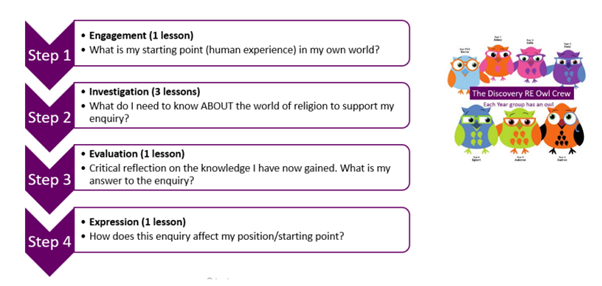

Across the school, we teach Science using the CUSP curriculum, which pays close attention to guidance provided by the National Curriculum sequence and content. Our ambitious Science curriculum has the intention of increasing children’s ability to think scientifically, enriching children’s vocabulary and wider view of the world, and putting what they learn into practice. Through studying CUSP Science, pupils become ‘a little more expert’ as they progress through the curriculum, accumulating, connecting and making sense of the rich substantive and disciplinary knowledge. Scientific analysis is developed through IPROF criteria. We call it ‘Thinking Scientifically.’
At Ambleside we aim to provide a rich experience of Science that enables our children to experience both depth and breadth in the units they cover. This is achieved through our “revisit” units where we revise units from earlier parts of the year to consolidate learning.
The methodology for teaching Science at Ambleside is to provide opportunities for children to develop their questioning skills, ignite curiosity and to widen their knowledge of the world and how it works. We want our children to respond proactively and positively to problem solving challenges and strive to learn more about the “how” and “why” of the world around us and beyond. We recognise that ‘our children are the future’ and they need to be equipped with the necessary skills to take risks, become resourceful, innovative, and questioning in order to become capable citizens.
We also recognise that Science encompasses a broad range of subject knowledge and draws on disciplines from the wider world such as mathematics, engineering, computing and geography. We believe making these curriculum connections are essential components that help to engage and connect our children with the opportunities Science provide.
By the time our children leave Ambleside they will have the skills, knowledge and experience to have a level of independent thinking to carry through to their future education and into their lives beyond the classroom.
See below for our Long Term Sequence.
